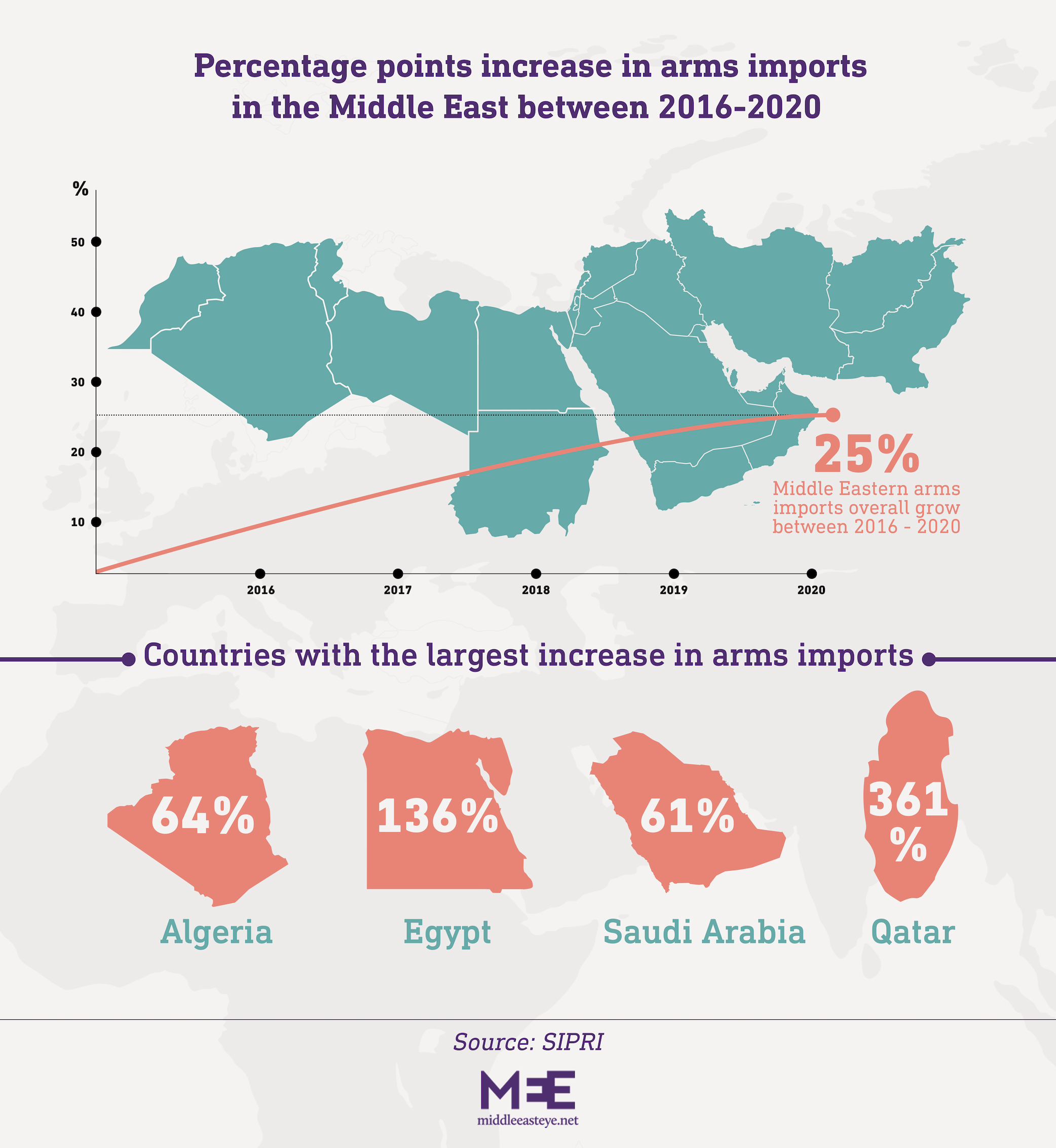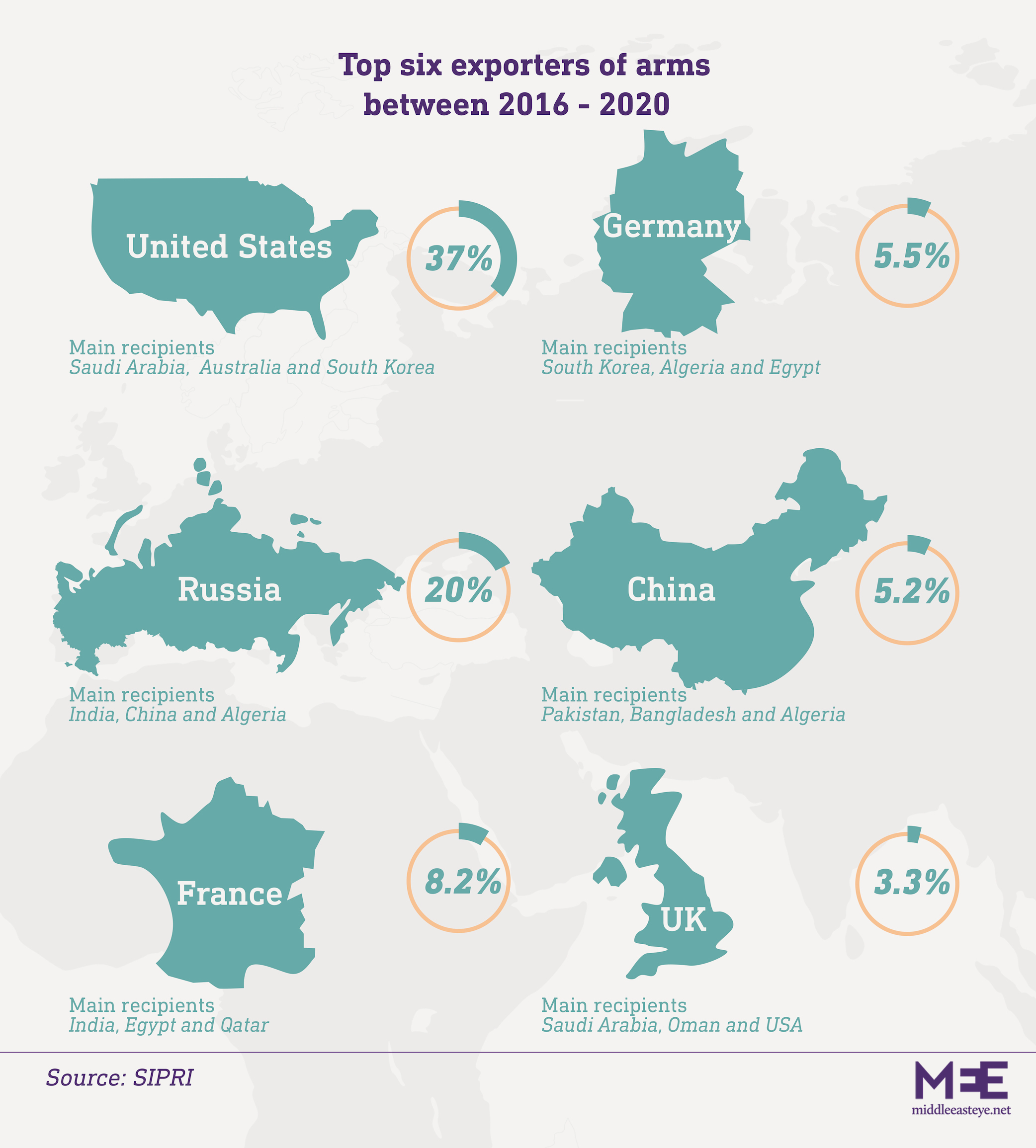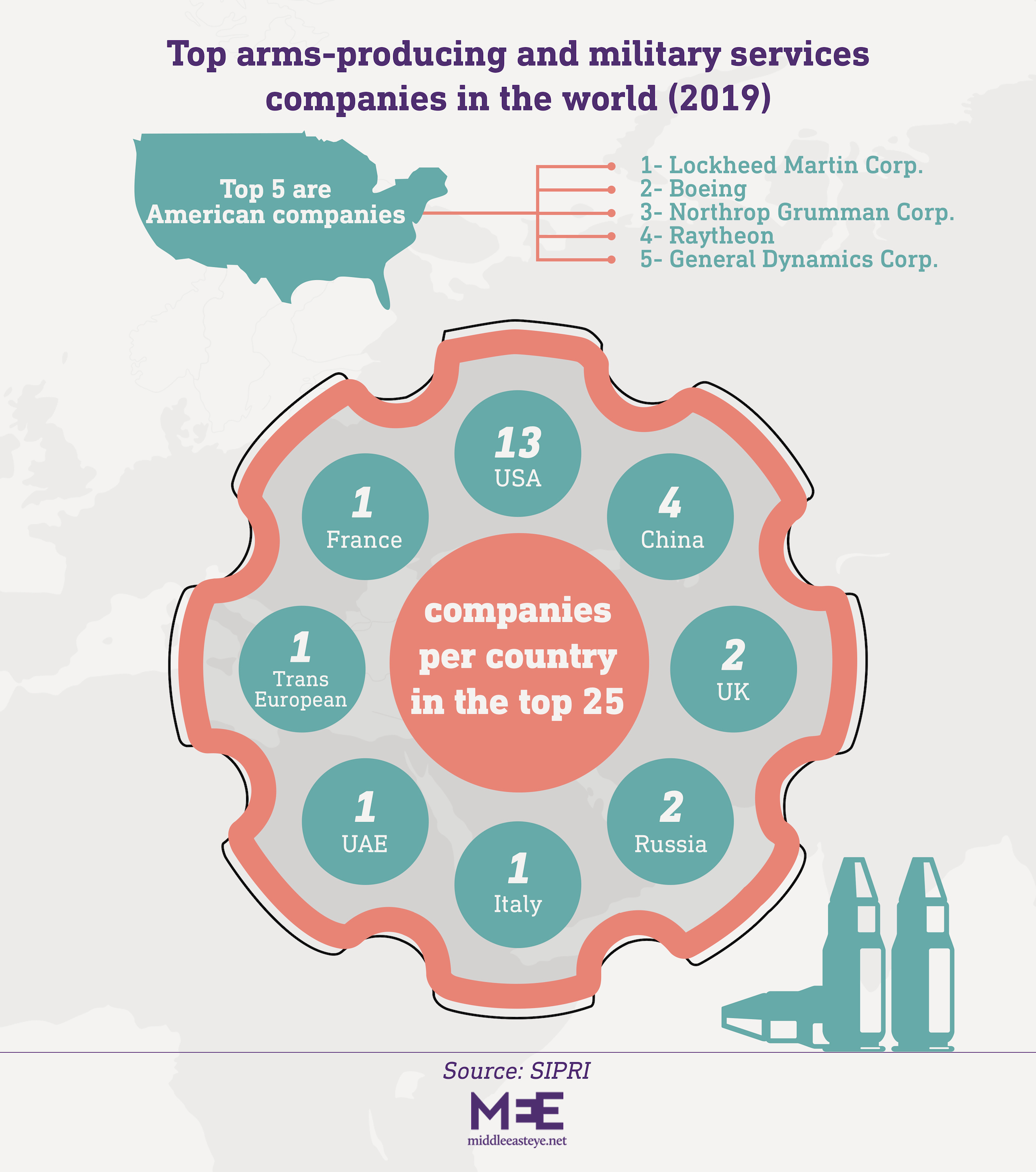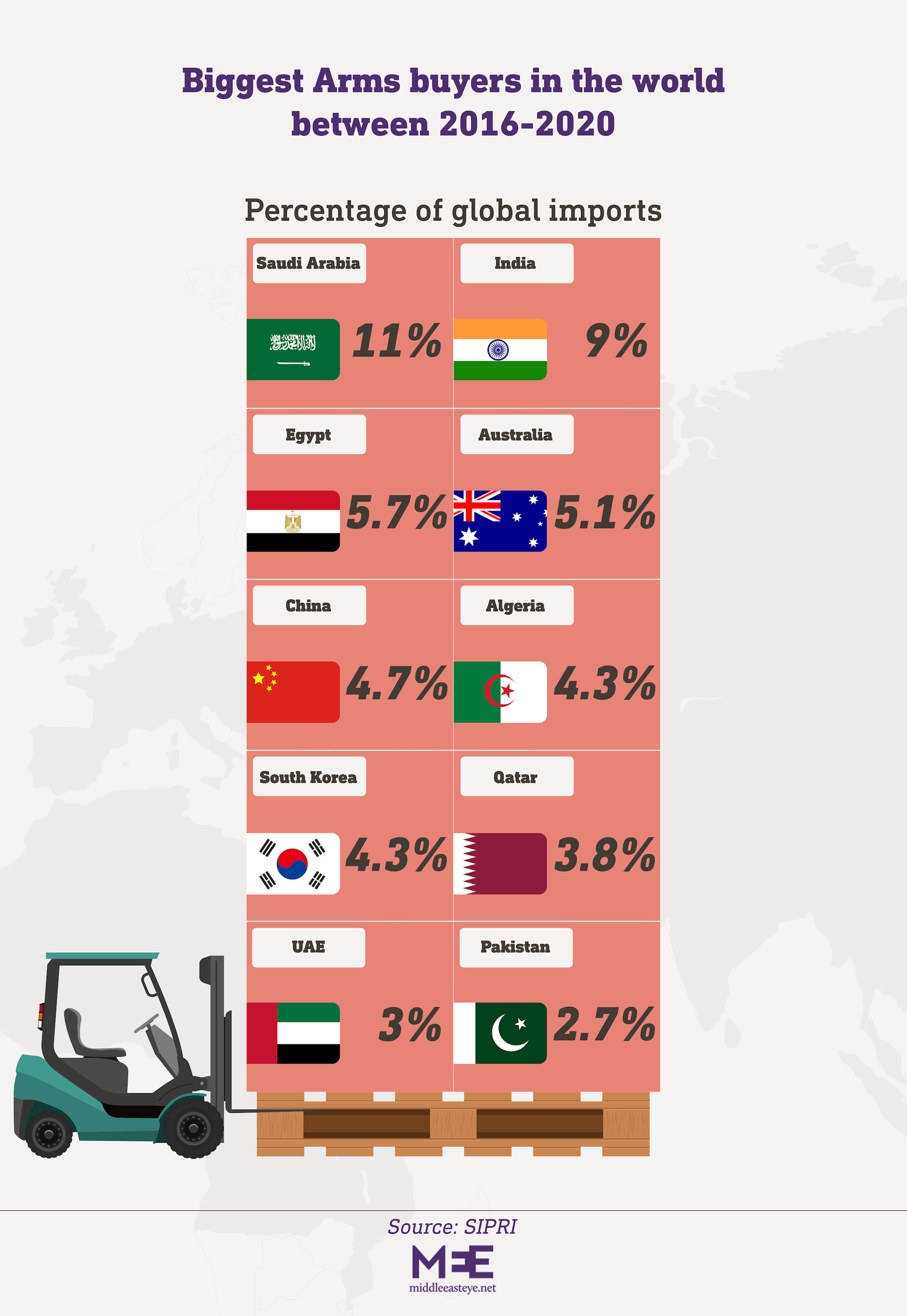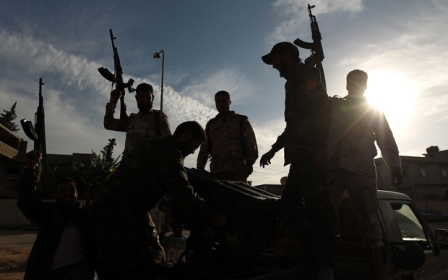Arms sales: US remains world's top supplier as Middle East spending spikes
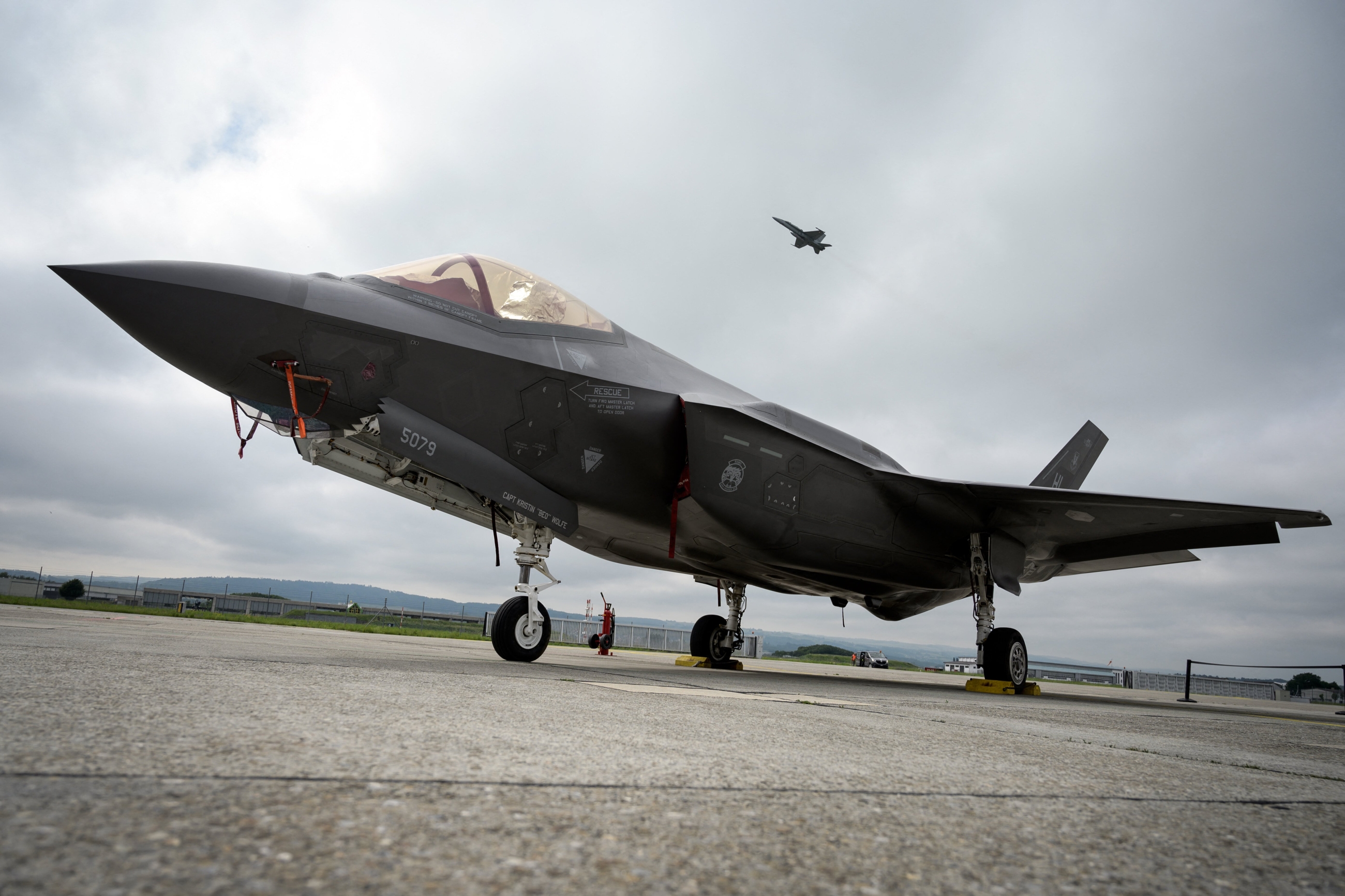
The United States remains the world's biggest exporter of major arms, and countries across the Middle East are importing weapons at record highs, a report from the Stockholm International Peace Research Institute (Sipri) has found.
The Trends in International Arms Transfers report, released in late March, found that while global arms sales levelled off during the 2016-2020 period, imports by the Middle East and North Africa grew by 25 percent.
According to Sipri, around 47 percent of US arms exports between 2016-2020 went to the Middle East - an increase of 28 percent from the previous five years.
These increases included US arms exports to Israel rising by 335 percent, Qatar by 208 percent and Saudi Arabia by 175 percent.
New MEE newsletter: Jerusalem Dispatch
Sign up to get the latest insights and analysis on Israel-Palestine, alongside Turkey Unpacked and other MEE newsletters
'How can the US talk about peace in Yemen while it is still engaged in the bombing of civilians'
- Shireen al-Adeimi, Yemeni-American academic
The report concluded that not only was the US the largest exporter of major arms, a position it has held since the end of the cold war, but its global share of arms exports also increased from 32 to 37 percent over the last five years.
In contrast, Russian arms exports decreased by 22 percent over the last five years, increasing the gap between two of the world's largest exporters of arms.
Sipri, based in Sweden, publishes arms transfer data in five-year instalments, "to give a more stable measure of trends given the significant year-on-year fluctuations in international transfers".
In its new report, countries that saw the largest percentage shift in imports include Qatar (+361 percent), Egypt (+136 percent) and Saudi Arabia (+61 percent) - as compared to the previous five years. Others, like Algeria, saw imports increase by 64 percent, whereas Morocco and the UAE saw a decrease in imports by 60 percent and 37 percent respectively.
Even then, the UAE remained the world's ninth-largest importer of arms, a majority of which is secured from the US, France and Russia.
Parts of the Middle East have remained interminably unstable for decades and arms and subsidies from the US and other Global North countries have been used by a variety of authoritarian governments and armed groups in the region.
During the 43-month Saudi-imposed blockade on Qatar that began in 2017, US major arms exports to both sides increased substantially, elevating tensions in the regions further.
"The increases in arms imports by several states in the Middle East occurred against the backdrop of tense relations between several states in the Gulf region and in the eastern Mediterranean," Alexandra Kuimova, a researcher at Sipri, told Middle East Eye.
"Many states in the region seek to play a major role in the Middle East and use arms as a key tool in the pursuit of this aim," Kuimova said.
Between 2016-2020, the US supplied major arms to 96 states, far more than any other country.
Saudi Arabia, the report found, accounted for 24 percent of all US arms sales.
Kuimova said there were particularly large increases in US arms exports to several states over the past five years.
"In 2016–20, total arms exports by the USA were 85 percent higher than those of Russia -the second-largest exporter - compared with 24 percent higher in 2011–15."
According to Sipri, 65 states around the world exported major arms over the past five years, with the five largest suppliers - the US, Russia, France, Germany and China - making up 76 percent of all arms exports.
Countries in North America and Europe accounted for 86 percent of all arms exports.
Exports from France increased by 44 percent, with a majority of these weapons being imported by India, Egypt and Qatar.
Azadeh Shahshahani, legal and advocacy director of Project South, described the findings as "deplorable".
"The US government, specifically, is willing to close its eyes on the atrocities committed by governments if they are reliable importers of US-made war-making machines.
"Instead of supporting peace, the Global North continues the colonial tradition of war-making. This also explains the lack of concrete action on the systematic human rights abuses of countries such as Saudi [Arabia] and Egypt," Shahshahani said.
Sipri's latest report also found that leading arms-producing and military service companies were still overwhelmingly from the Global North, particularly the United States, where the top five companies were based.
For the first time, Edge, the UAE state-owned arms company, entered Sipri's list of top 25 arms-producing companies, having accounted for 1.3 percent of global arms sales.
Edge supplies weaponry to the UAE armed forces and develops drones, unmanned vehicles, smart weapons, and electric warfare equipment.
"Edge is a good illustration of how the combination of high national demand for military products and services with a desire to become less dependent on foreign suppliers is driving the growth of arms companies in the Middle East," Pieter Wezeman, senior researcher with the Sipri arms and military expenditure programme, said.
In February, Edge's CEO Faisal al-Bannai said it would produce parts for F-35 fighter jets if Washington agreed to sell US warplanes to the UAE following the Biden's administration's decision to review deals made both to the UAE and Saudi Arabia during the latter days of Donald Trump's presidency.
According to the Wall Street Journal, the review included deals made on precision-guided munitions to Saudi Arabia and F-35 fighter jets to the UAE.
Saudi Arabia remains largest market for arms
Over the past five years, Saudi Arabia made up 11 percent of the major arms import market, and according to Sipri's data, is the biggest importer of US, UK and Canadian arms.
In early February, in his first foreign policy address as president, Biden said the US would no longer support the Saudi-led war in Yemen. Two months later, activists and lawmakers are still asking for clarity as to what the new policy would entail.
"This is the third administration actively fuelling this war. Despite recent promises - and there have been positive developments - the war is still going and the bombs are still dropping with US support, even if that support looks a little different," Shireen al-Adeimi, an assistant professor at Michigan State University, said in late March during an online discussion with the anti-war movement, Win Without War.
"How can the US talk about peace in Yemen while it is still engaged in the bombing of civilians, the starving of civilians?" Adeimi said.
A study released in late March by the Yemen Data Project found that the Saudi-led coalition conducted around 22,766 air raids in Yemen and up to 65,982 individual air strikes over the past six years.
The report says that an estimated 30 percent of the strikes hit non-military sites, including schools, residential areas and hospitals.
Meanwhile, India remains second on the list of biggest importers of major arms on the planet, despite having reduced imports from Russia and increasing domestic manufacturing. India has also become Israel's largest importer of Israeli arms, as the relationship between the two countries deepens.
"Avoiding risks of over-dependence on a single arms exporter (Russia), India has been pursuing a policy of diversifying its arms suppliers by signing a number of arms deals with various arms suppliers including Israel, France and the USA," Kuimova said.
Israeli arms exports represented three percent of the global flows and were 59 percent higher than the previous five years, the report said.
Sipri said while there have been suggestions that the Covid-19 pandemic had led to a fall in arms transfers in 2020, it found that several states "actually had higher levels of arms deliveries in 2020 than in some other years in the period 2011–19."
"For example, US arms exports in 2020 were higher than they were in three years in 2011–19 and French arms exports in 2020 were higher than in five years in the same period," the group said.
This article is available in French on Middle East Eye French edition.
Middle East Eye delivers independent and unrivalled coverage and analysis of the Middle East, North Africa and beyond. To learn more about republishing this content and the associated fees, please fill out this form. More about MEE can be found here.


